15 Long-Haul Flight Mistakes To Avoid (Plus 2 You Might Not Expect)
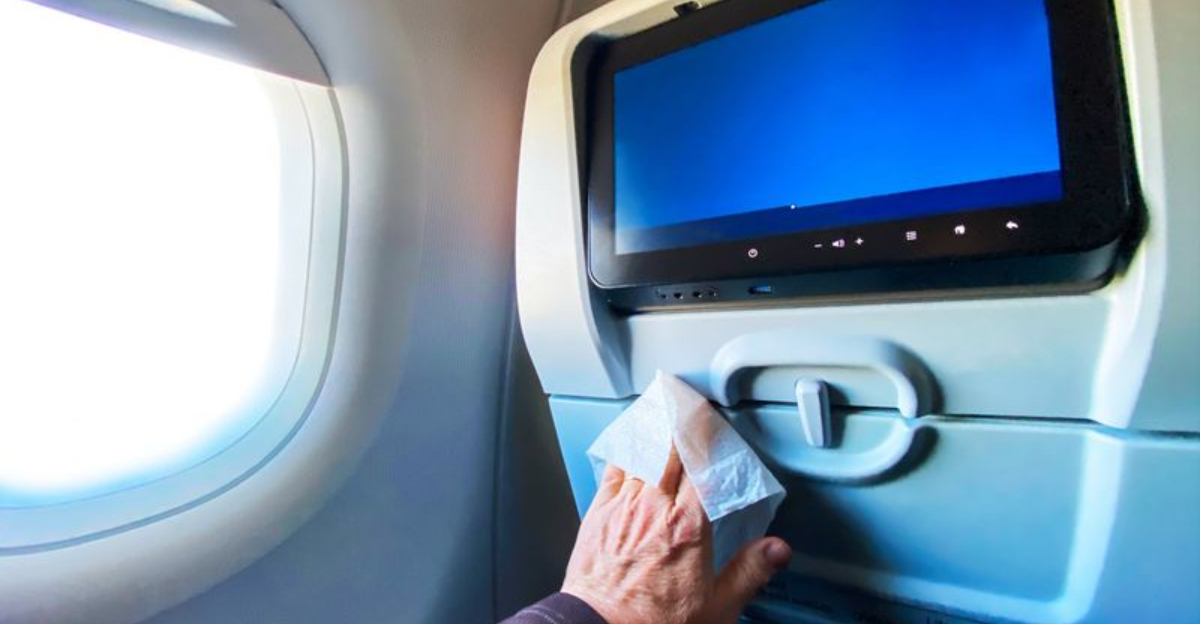
Long flights aren’t for the faint of heart. Hours in a cramped seat, questionable meals, dry cabin air—it’s like a weird endurance sport in the sky. But trust me, there are ways to make the journey feel a lot less brutal.
After dozens of long-haul flights (and a few rough landings—figuratively and literally), I’ve figured out which little decisions actually make a big difference. Want to arrive at your destination feeling refreshed, not wrecked?
From choosing the right seat to mastering in-flight hydration and avoiding sneaky travel pitfalls, here’s how to outsmart that 10-hour ordeal and step off the plane like a pro. Because let’s face it: jet lag is real, but suffering through your flight doesn’t have to be.
1. Booking a middle seat
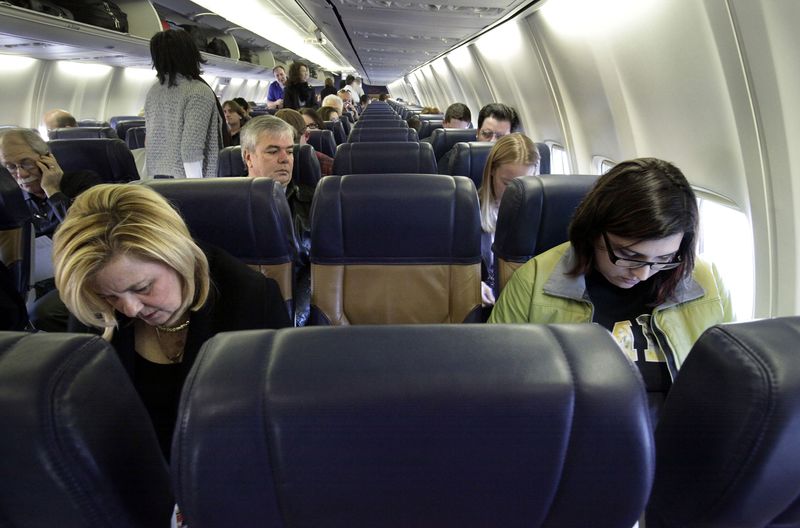
Nothing screams rookie traveler like willingly choosing the dreaded middle seat on a 12-hour flight. Sandwiched between two strangers, you’ll battle for armrests while performing gymnastics to reach the aisle.
When booking, I always spend the extra time selecting an aisle or window seat. The aisle gives you freedom to stretch and bathroom access without disturbing others. Windows offer something to lean against and control over the shade.
If traveling with a companion, choose a window and aisle in the same row – if nobody books the middle, you’ve scored! If someone does, they’ll usually happily trade for your aisle or window.
2. Not staying hydrated
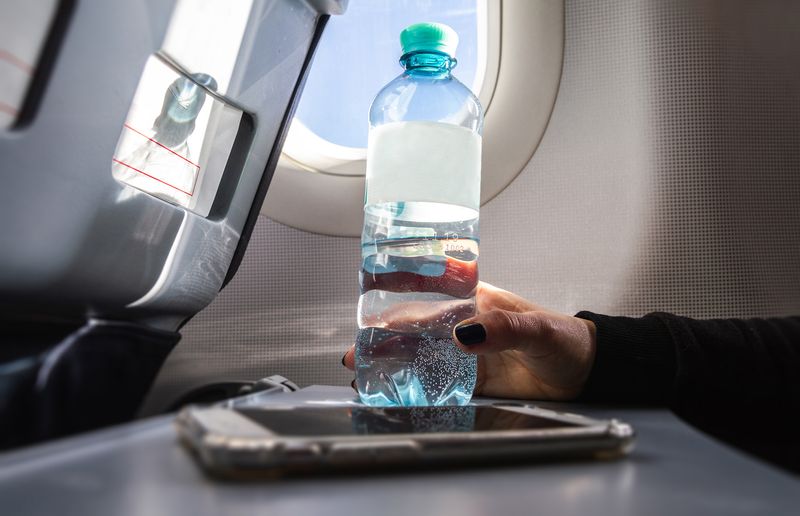
Cabin air typically hovers around 10-20% humidity – drier than most deserts! My skin turns to parchment and my throat feels like sandpaper without proper hydration during long flights.
I bring an empty water bottle through security and fill it before boarding. Flight attendants are happy to refill throughout the journey, saving me from those tiny cups that barely quench thirst.
Hydration isn’t just about water, though. I avoid caffeine and alcohol which worsen dehydration. Applying moisturizer to face and hands plus saline nasal spray prevents that dried-out feeling that makes jet lag even worse.
3. Wearing tight or uncomfortable clothes
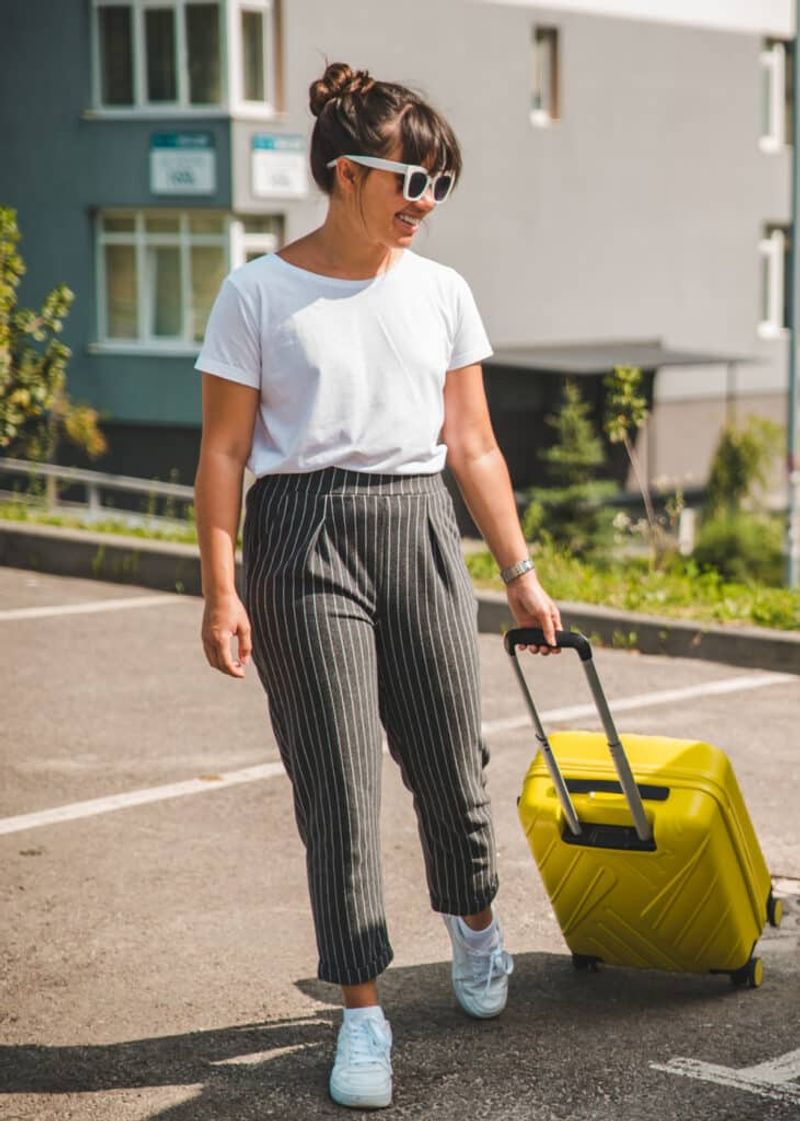
Fashion has no place on a long-haul flight. I learned this lesson after spending 14 hours in skinny jeans and waking up with legs so swollen I could barely walk through the terminal.
Loose, stretchy fabrics are your best friends at 35,000 feet. Cotton, modal, or soft athletic materials allow your body to breathe and move. Compression socks actually help with circulation, preventing that puffy ankle syndrome.
Shoes matter too! Feet swell during flights, so slip-ons that adjust to changing foot size are perfect. They’re also easier to remove for security and to slip off during the flight without performing contortionist moves.
4. Forgetting to move and stretch
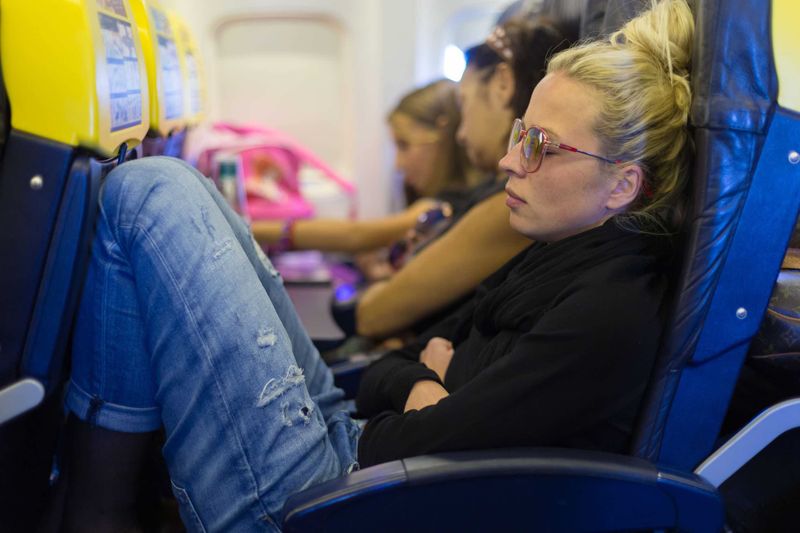
Sitting motionless for hours isn’t just uncomfortable – it’s potentially dangerous. Deep vein thrombosis is a real risk on long flights, especially for older travelers or those with certain health conditions.
Every hour or so, I make a point to stand, stretch, and walk the aisle. Simple seat exercises help too: ankle circles, shoulder rolls, and neck stretches keep blood flowing. The back of the plane often has space to do deeper stretches without blocking service carts.
Flight attendants actually appreciate seeing passengers move around (as long as the seatbelt sign isn’t on). Your body will thank you upon arrival with fewer aches, less stiffness, and reduced jet lag symptoms.
5. Relying only on airline entertainment
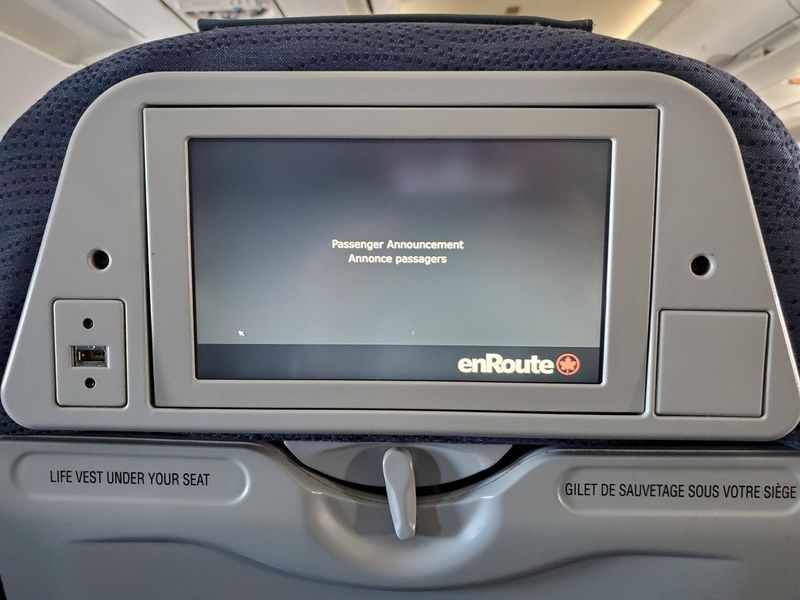
The screen goes black halfway through your movie. Or worse – the entire system is broken for your 14-hour journey. I’ve experienced both disasters and learned never to count on airline entertainment alone.
Before any long flight, I download plenty of content to my tablet or phone: movies, TV shows, podcasts, music, and e-books. A portable charger ensures my devices stay powered throughout the journey.
Variety is crucial for combating boredom. Switching between reading, watching, listening, and even old-school activities like crosswords keeps your mind engaged. Having your own entertainment also means never settling for whatever mediocre movie options the airline provides.
6. Skipping travel insurance
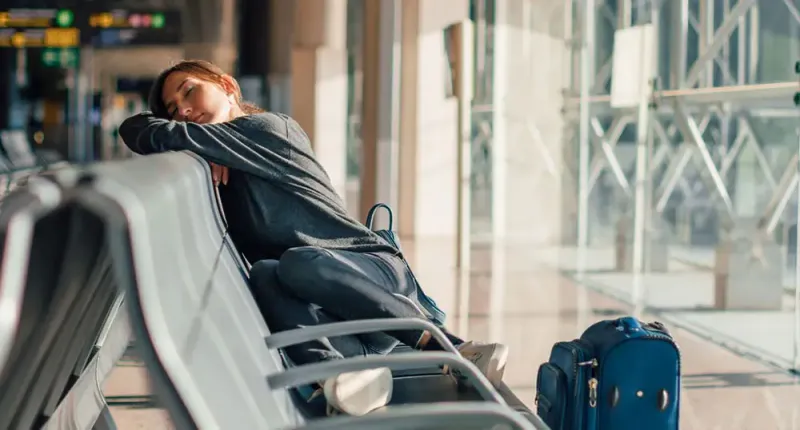
That $50 insurance seemed like a waste – until my connecting flight was canceled and I was stranded in a foreign airport overnight with no compensation. Travel insurance isn’t exciting, but it’s essential protection for long-haul international trips.
Medical emergencies abroad can cost tens of thousands without coverage. Good policies also cover trip cancellation, lost luggage, and significant delays. The peace of mind alone is worth the premium.
When choosing insurance, read the fine print about coverage limits and exclusions. Some credit cards offer basic travel protection, but standalone policies typically provide more comprehensive coverage for international long-haul journeys where more can go wrong.
7. Not bringing snacks
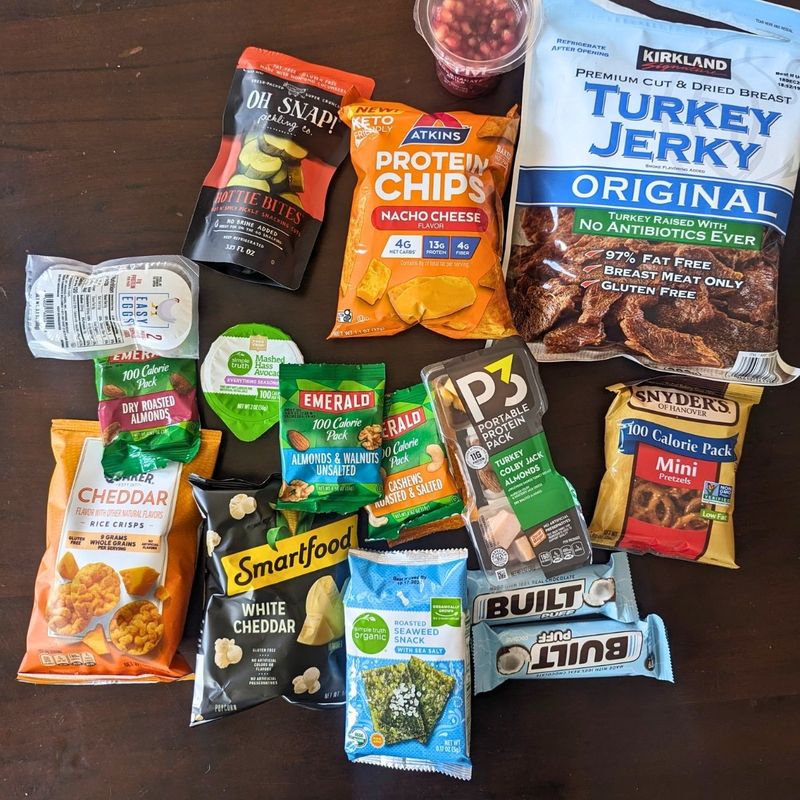
Airline food timing rarely aligns with your actual hunger, and quality can range from decent to mysterious. During a flight to Asia, I once went 6 hours between meals while my stomach growled loudly enough to wake neighboring passengers.
Protein-rich snacks like nuts, jerky, and protein bars keep blood sugar stable and mood elevated. Fresh fruit, granola, and crackers are easy to pack and satisfy cravings between meal services.
Bringing your own food isn’t just about avoiding hunger – it’s about maintaining energy and comfort. Eating small amounts regularly helps prevent that bloated, uncomfortable feeling that often comes with airplane meals and the pressure changes at altitude.
8. Overpacking your carry-on

Stuffing your carry-on until the zipper barely closes creates a cascade of problems. I’ve watched fellow passengers struggle to lift overpacked bags into overhead bins, items spilling everywhere during security checks, and frustrated seat neighbors as bulky items invade their space.
Limited underseat space means comfort suffers with an oversized personal item. Your legs need room to stretch during those long hours to prevent stiffness and potential circulation issues.
A thoughtfully packed carry-on contains only flight essentials: entertainment, comfort items, medications, valuables, and a change of clothes. Everything else belongs in checked luggage. The freedom of movement with minimal carry-on items transforms your long-haul experience from cramped to comfortable.
9. Ignoring time zone adjustments
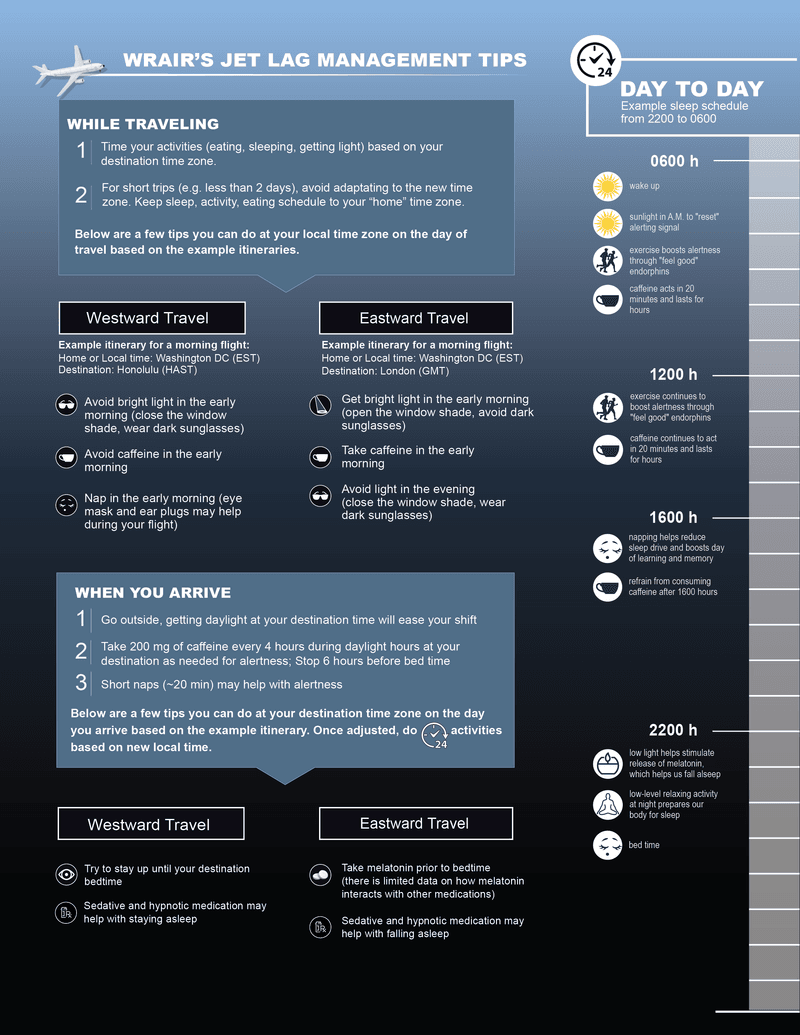
Jet lag hits like a truck when you don’t prepare your body for massive time changes. Before my first Asia trip, I made zero adjustments and spent the first three days of vacation in a zombie-like state, wasting precious exploration time.
Gradually shifting your sleep schedule before departure helps tremendously. Even adjusting by just 1-2 hours per day in the direction of your destination eases the transition. During the flight, I immediately switch my watch and phone to destination time.
Eating and sleeping according to your destination’s schedule, even during the flight, helps reset your internal clock faster. Avoiding alcohol and caffeine during travel further reduces jet lag symptoms, making your first days at your destination much more enjoyable.
10. Wearing contact lenses the whole flight

My eyes felt like they were filled with sand after wearing contacts during a 16-hour flight. The extremely dry cabin air turns contact lenses into moisture-sucking discs that can actually scratch your corneas and cause serious discomfort.
Glasses are the smarter choice for long-haul flights. They won’t dry out your eyes and make sleeping more comfortable without worrying about lens damage. If you must wear contacts, bring preservative-free eye drops specifically formulated for contact wearers.
A clean contact case and solution in your carry-on allows for easy removal mid-flight. Some travelers even pack daily disposables to ensure fresh lenses upon arrival – much better than starting your vacation with red, irritated eyes.
11. Not bringing noise-canceling headphones

Regular headphones simply can’t compete with the constant engine drone, crying babies, and chatty neighbors on long flights. After investing in quality noise-canceling headphones, my in-flight experience transformed completely.
The technology actively blocks low-frequency sounds like engines and air conditioning, creating a bubble of relative quiet. This means lower volume for your entertainment, reducing ear fatigue during long flights. Many travelers don’t realize these headphones can be used even without music – just for the blessed noise reduction.
While quality models aren’t cheap, they’re worth every penny for frequent travelers. The ability to arrive without the mental exhaustion from hours of noise exposure makes a dramatic difference in how you feel after crossing oceans.
12. Drinking too much alcohol

Free wine might seem like a flight perk, but alcohol at altitude affects your body differently than on the ground. At 35,000 feet, those two glasses hit like four due to lower oxygen levels in the pressurized cabin.
Alcohol significantly worsens dehydration, disrupts sleep quality, and amplifies jet lag symptoms. While it might help you fall asleep initially, the quality of that sleep is poor, leaving you more exhausted upon arrival.
If you do enjoy a drink, balance each alcoholic beverage with at least two glasses of water. Better yet, skip alcohol entirely during long flights and save the celebration for when you reach your destination. Your body will thank you with more energy and less recovery time.
13. Not packing essential meds in your carry-on

Trusting medications to checked baggage is gambling with your health. Lost luggage meant my friend spent two days tracking down prescription medication in a foreign country instead of enjoying their vacation.
Beyond prescriptions, a basic medical kit prevents minor issues from becoming major disruptions. Headache relievers, motion sickness medication, antacids, and band-aids address common travel discomforts. Prescription medications should always be kept in original containers with labels to avoid questions at customs.
Don’t forget sleep aids if you use them, allergy medications, and any personal health essentials. Even with perfect planning, bodies often react unexpectedly to the stress and environment changes of long-haul travel. Having your medical necessities accessible provides crucial peace of mind.
14. Boarding without layers for changing temps

Airplane temperatures fluctuate wildly, from sweaty boarding to freezing mid-flight chills. I’ve shivered through entire overnight flights when the cabin felt like a refrigerator, unable to sleep from the cold.
Dressing in removable layers gives you control regardless of cabin conditions. A lightweight base layer, mid-layer like a sweater or fleece, and an easily packable outer layer work perfectly. Natural fabrics like cotton and wool regulate temperature better than synthetics.
Don’t count on airline blankets – they’re often thin and insufficient. A large scarf or travel wrap serves multiple purposes: extra warmth, lumbar support, or even an emergency eye mask. Warm socks are essential too, especially if you remove shoes for comfort during long flights.
15. Leaving chargers in checked luggage
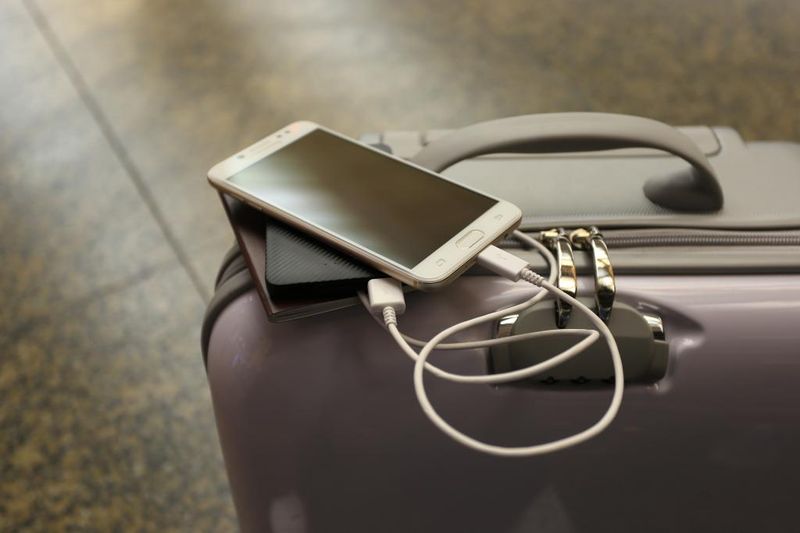
Running out of battery six hours into a fourteen-hour flight is a special kind of torture. Even worse is arriving at your destination with dead devices and realizing all your chargers are in a checked bag that didn’t make it.
Power banks are essential for long-haul travel, but many travelers don’t realize there are restrictions – most airlines only allow lithium batteries in carry-ons, not checked bags. A multi-port charger saves precious outlet space when you finally find one at the airport.
Check if your aircraft has power outlets before flying. Many newer planes offer USB ports or full outlets, but older aircraft might not. Even with onboard power, having your own backup ensures you’re never left staring at a black screen with hours left to fly.
16. Forgetting disinfectant wipes (unexpected)
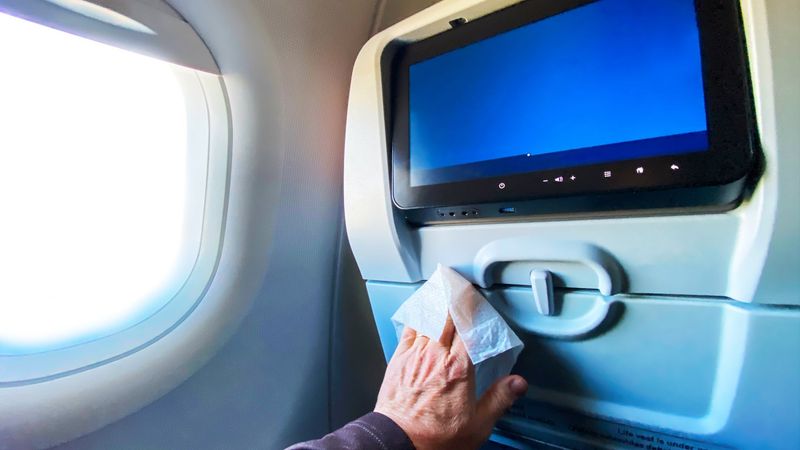
Airplane surfaces harbor more germs than you might expect. Tray tables often contain more bacteria than bathroom door handles! Before COVID, I rarely thought about this, but now disinfectant wipes are my first item out after boarding.
Studies show tray tables, seat belt buckles, armrests, and entertainment screens rarely get thorough cleaning between flights. A quick wipe-down of your immediate area dramatically reduces your exposure to viruses and bacteria.
This simple habit has helped me avoid the notorious “vacation cold” that so many travelers develop shortly after flying. Individually packaged wipes take minimal space in your carry-on but provide significant protection. This small step might be the difference between enjoying your destination or spending it with tissues and medicine.
17. Assuming you’ll sleep without help (unexpected)
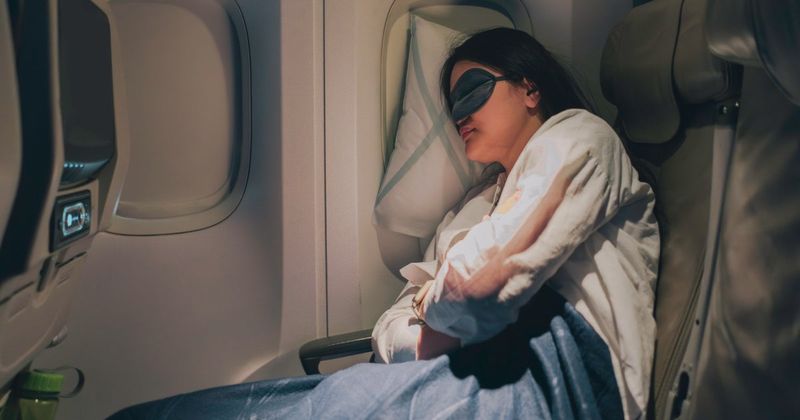
Even when exhausted, quality sleep on planes often remains elusive. Background noise, uncomfortable positions, and disruptions create the perfect anti-sleep environment. I once spent an entire overnight flight staring at the ceiling, arriving at my destination barely able to function.
Creating a sleep kit transforms your experience: a quality eye mask blocks light completely, including the glow from others’ screens. Earplugs or noise-canceling headphones minimize disruptions. A supportive neck pillow prevents that horrible head-bob that jolts you awake.
Consider non-prescription sleep aids like melatonin after consulting your doctor. Some travelers swear by magnesium supplements or herbal teas that promote relaxation. These small helpers can mean arriving refreshed instead of resembling a jet-lagged zombie.
